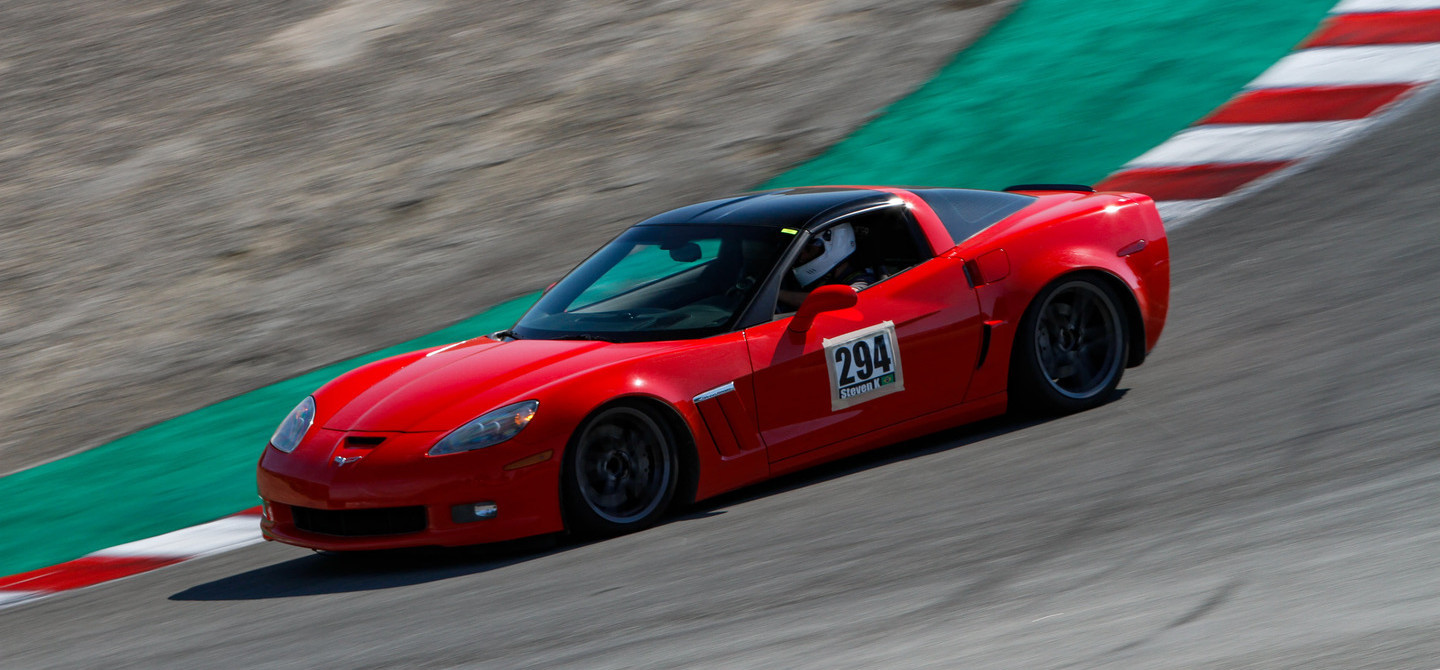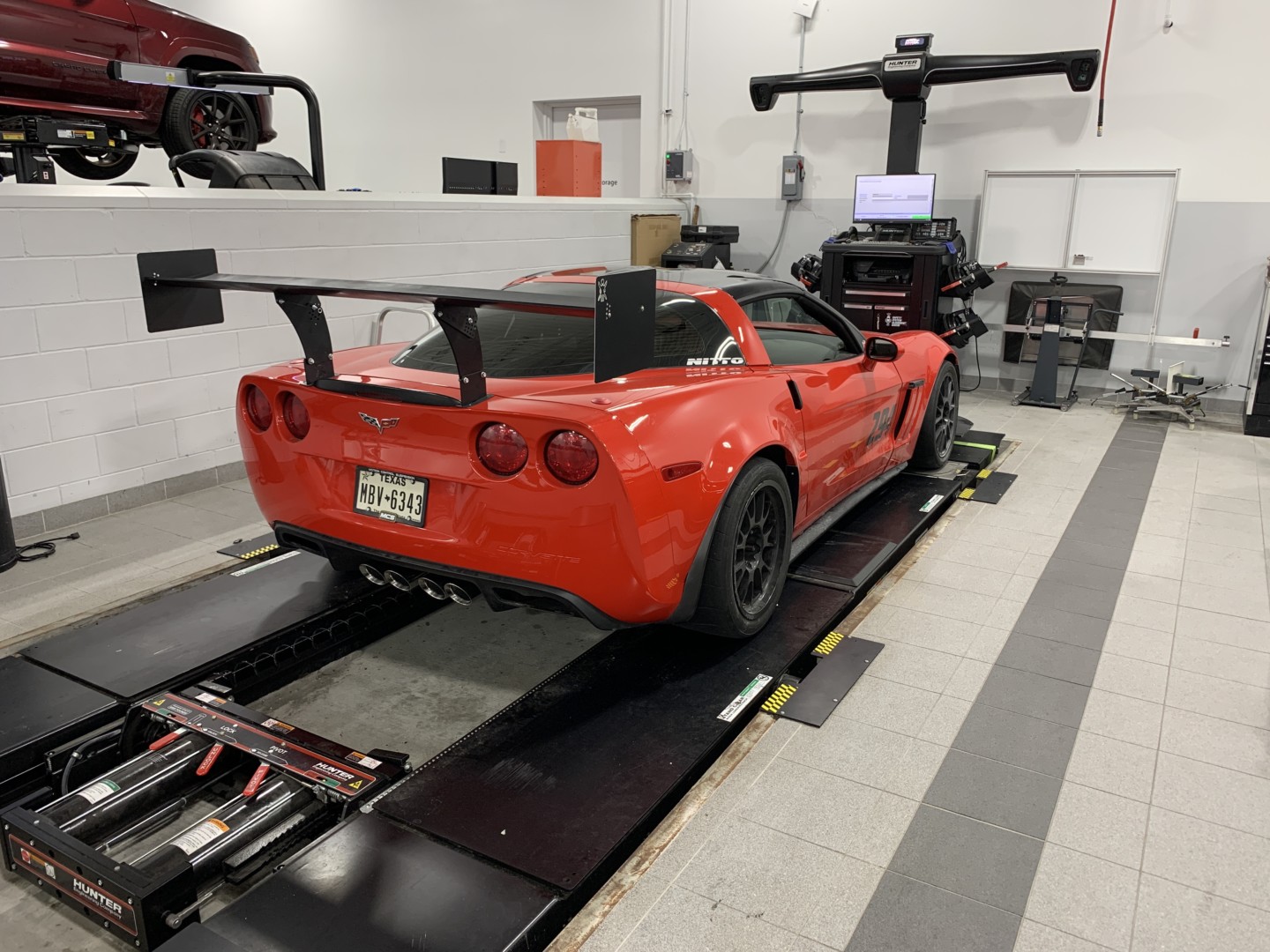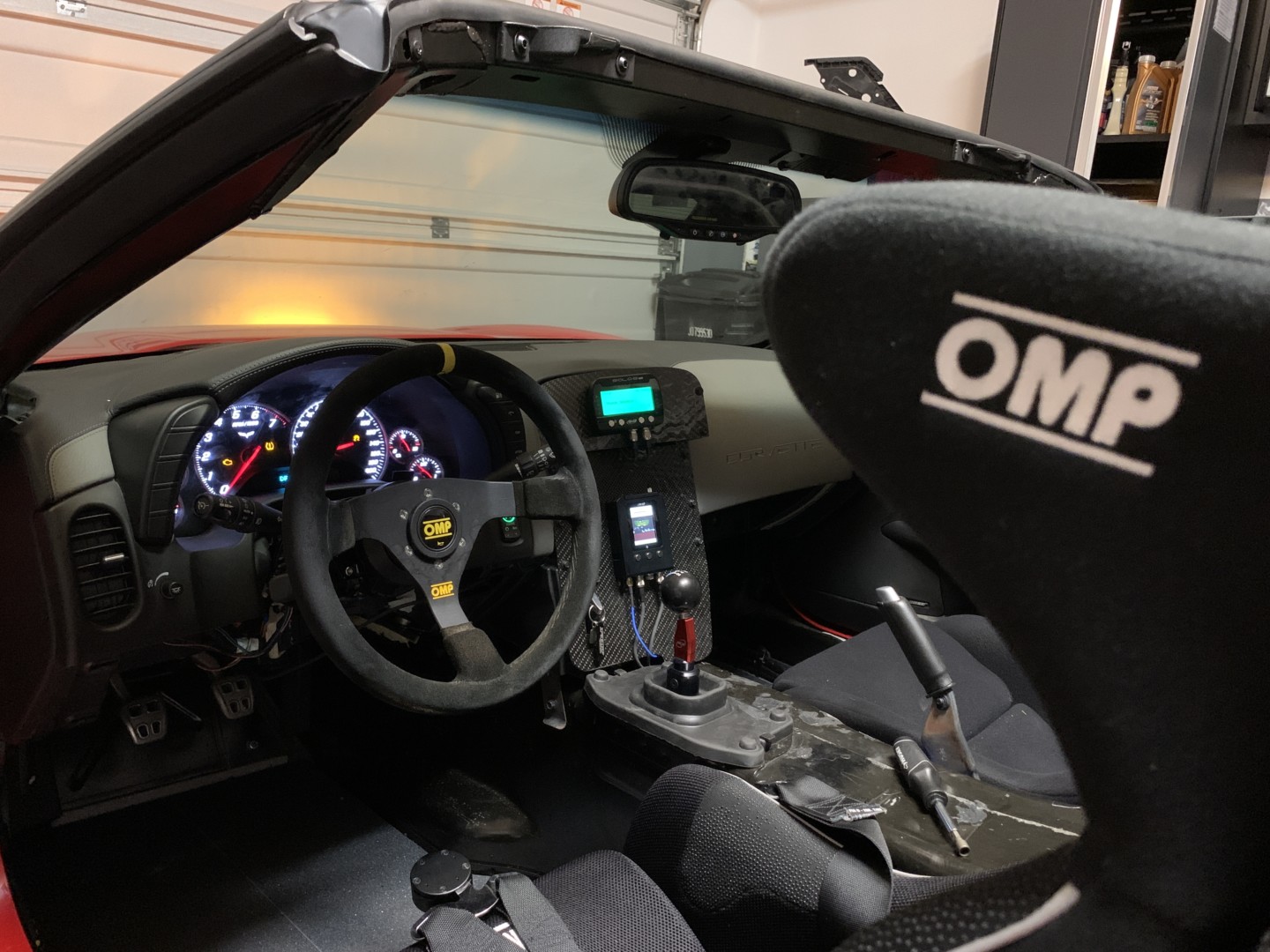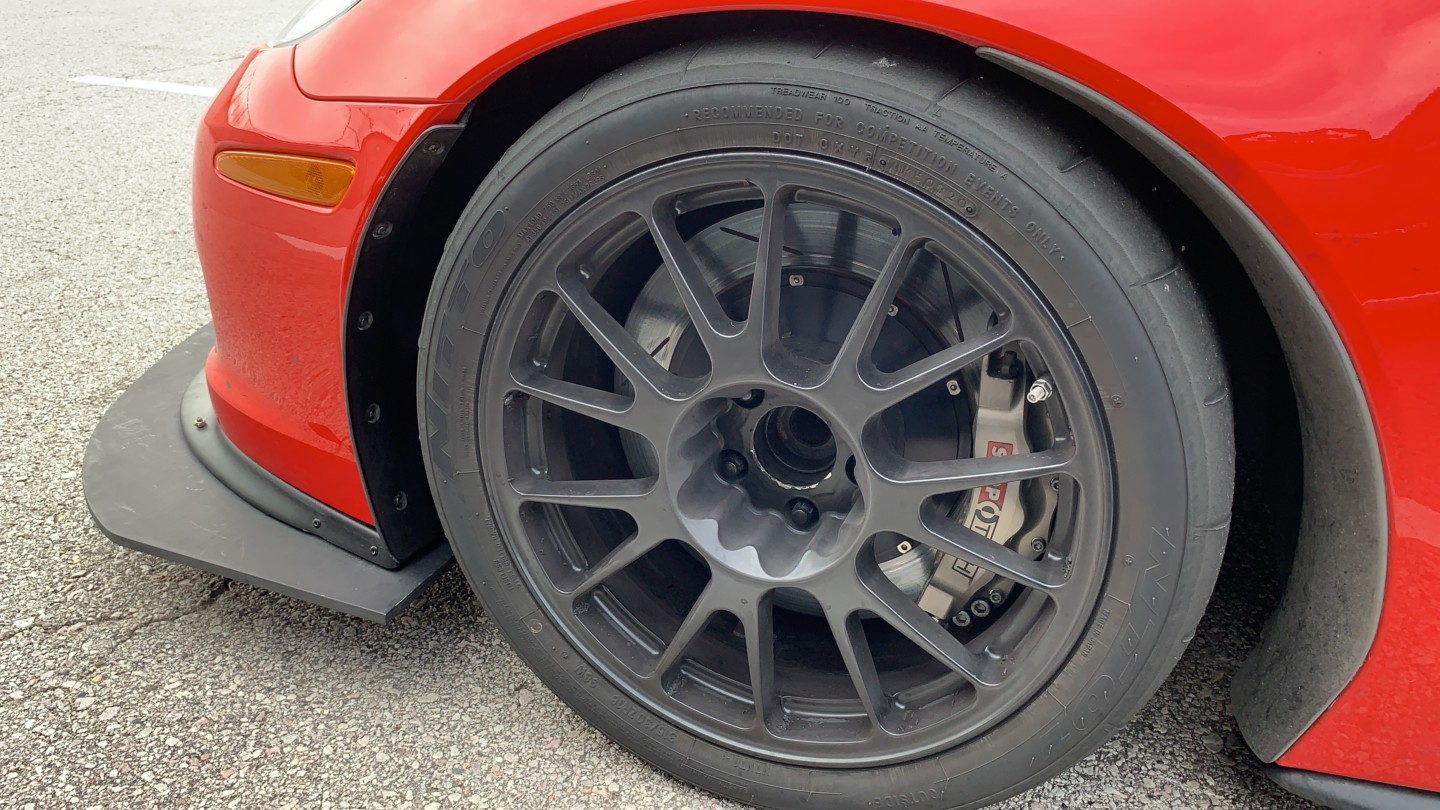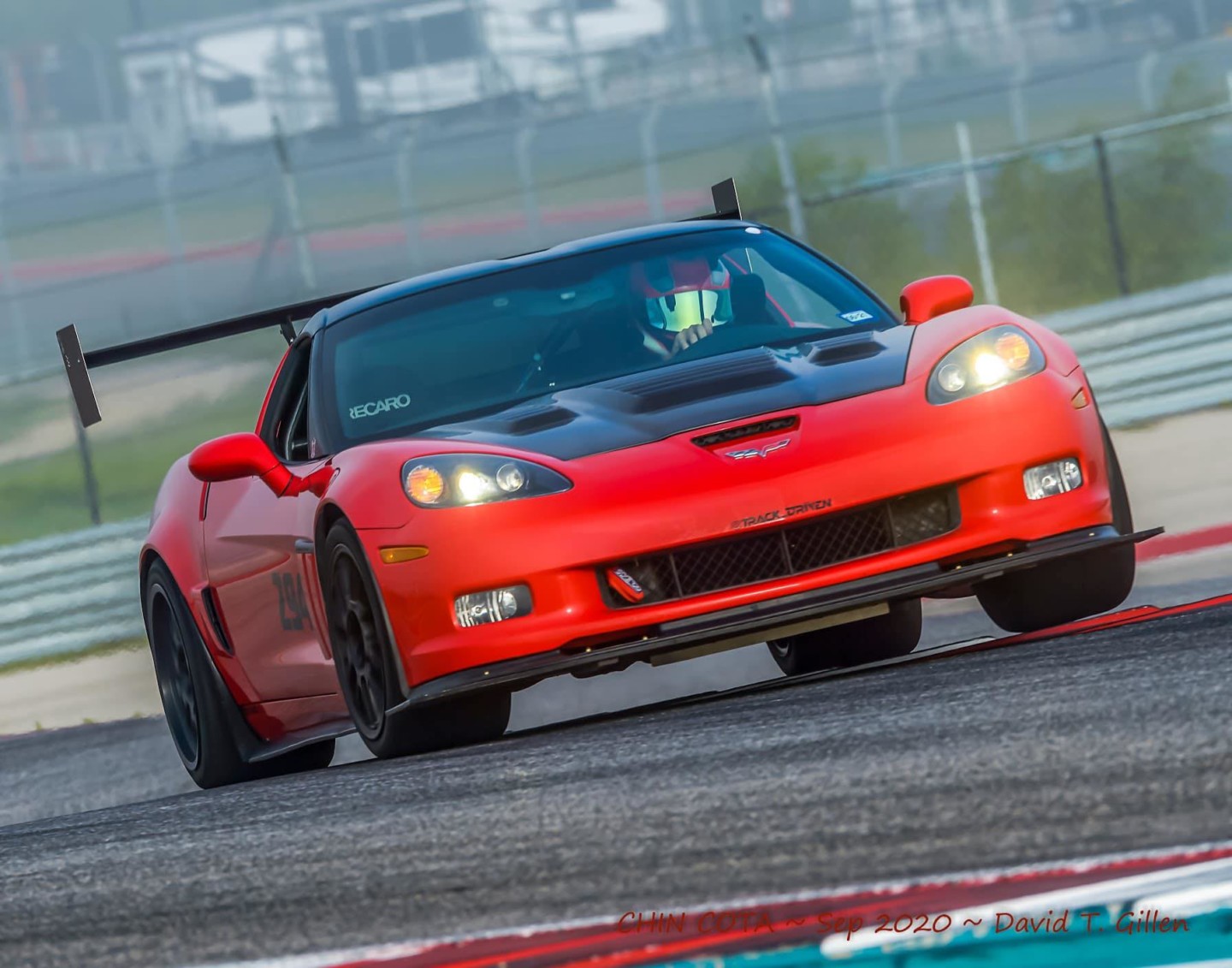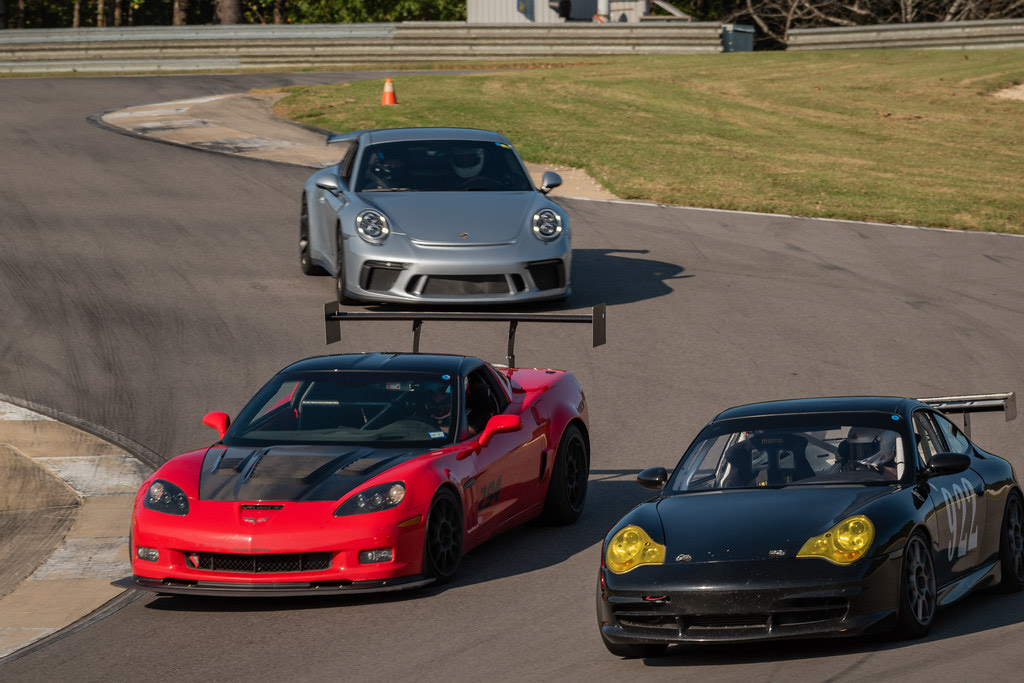The C6 generation represents the Corvette lineage’s most significant step between new and old. The improved weight distribution sharpened handling and swayed Steven Kronemberger, who’d until that point had been dedicated to tracking light, torqueless, high-revving cars like Honda’s S2000 and Civic Type R.
The Grand Sport model struck him as the sensible compromise between the standard car and the wild, more temperamental Z06. Why? The Grand Sport borrowed many of the contemporary Z06’s parts most important to the track rat. Though it didn’t come with an LS7, the Grand Sport was still pretty punchy with a 440-horsepower LS3.
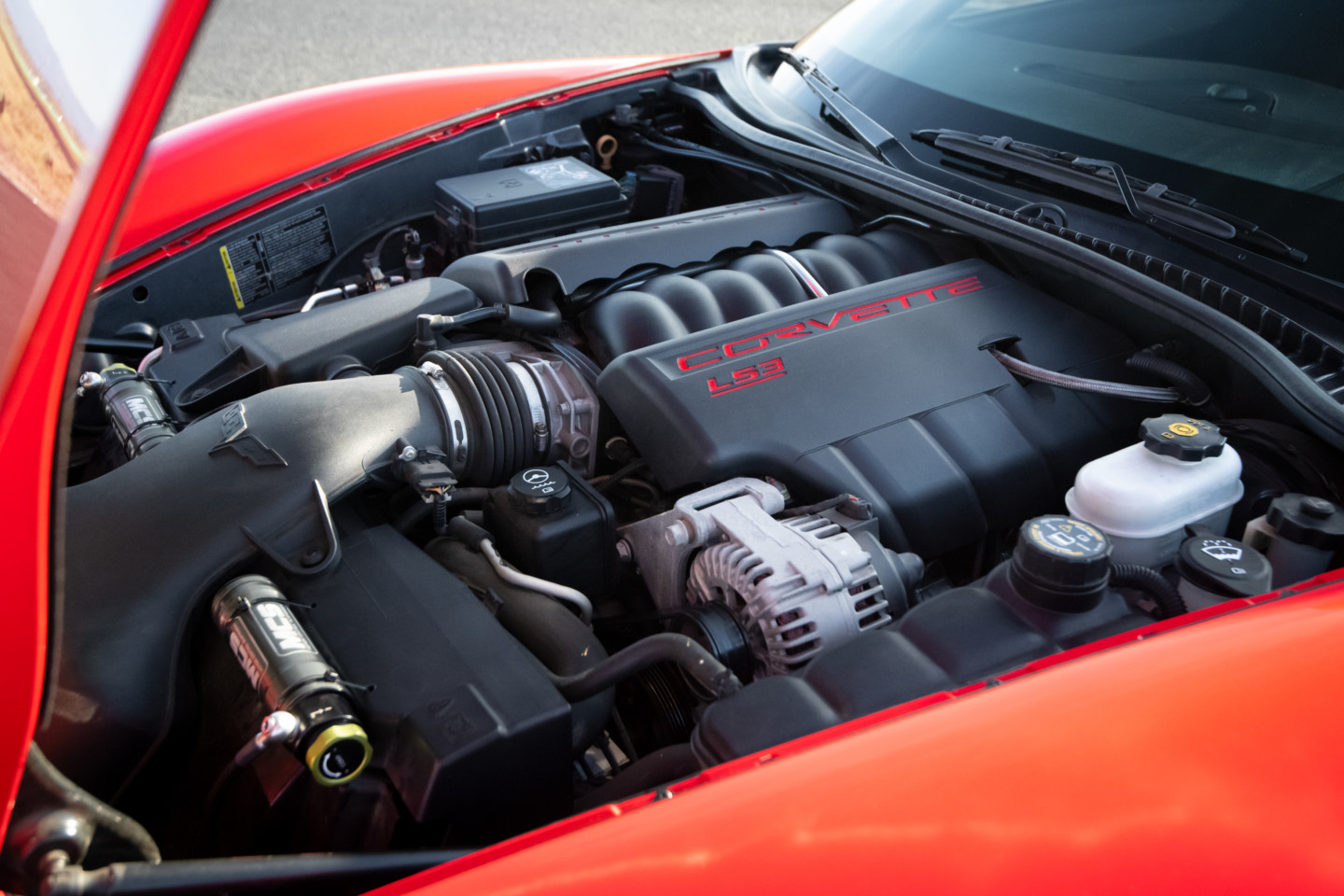
“It was the challenge of handling a rear-wheel-drive with lots of torque that motivated me,” he says while reflecting on the Grand Sport’s appeal.
Crucially for a high-performance driver education (HPDE) junkie, the LS3 lacked the valve lifter issues that plagued the LS7. Reliability was a concern since he originally intended it for long weekend getaways with his wife, but he was smitten with the handling balance and the torque. It wasn’t long before Kronemberger started sorting it out for track use.
Stock Shortcomings
With 424 lb-ft of torque available just about any time, the Corvette was far more brutal than any of his previous track toys. However, after a trip to Laguna Seca — which revealed the full extent of its character, warts and all — he recognized the car would need some improvement if he were ever to get to terms with it truly.

“The suspension was soft and the horrible seats offered no support, so those were the first things I threw in the trash.”
In their place went a set of LG Motorsports non-adjustable coilovers and two Recaro Pole Position seats with Sparco harnesses linked to a Vetteworks Shark harness bar. Along with the track-worthy brakes and tires—Hawk DTC-70s and Nitto NT01s, respectively—it came into its own.
So much of that quick transformation was due to the Grand Sport leaving the factory with an already stout platform, after all. The stock wheels are suitable for a 325-section tire in the rear and a 275 up front. Within those broad tires sit six-piston and four-piston calipers matched to 355mm and 340mm rotors, respectively. Of course, the footwork would need some improvement to support Kronemberger’s ambition and aggressive style, but it was all fairly strong, to begin with.
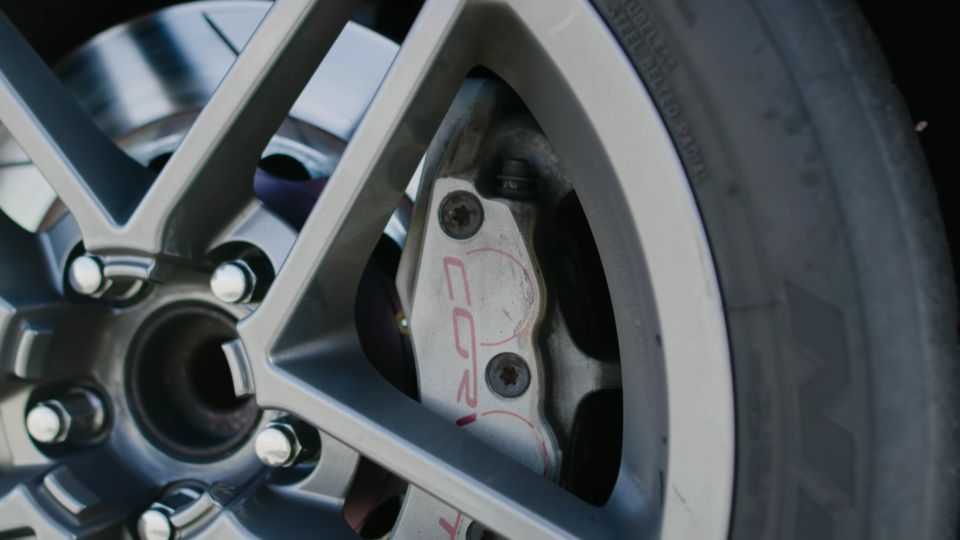
Having sizable brakes is a good thing because the 3,350-pound Grand Sport is not exactly a light car.
To help avoid any frustrating incidents, Kronemberger replaced the stock rotors with a set of Girodiscs. Those helped provide a strong coefficient of friction, especially when paired with high-torque pads. Just look at the impressive stopping power showcased 30 seconds into the footage below.
Putting the Power Down
Braking is just one of its strengths — another nice thing about this car is its appealing mix of playfulness and composure. As we can see from the footage above, provided he’s quick with his hands, Steven can drive with a hilarious amount of oversteer, leaving Laguna’s slower corners. Though it’s not the fastest way, its transaxle setup and beefy tires mean this approach is not far from ideal.
That playfulness isn’t much hindrance with someone comfortable with oversteer; this sliding tail doesn’t come unstuck as quickly when traversing over bumps. The Corvette soaks up the compression and subsequent bumps, leaving Turn 6, which allows him to get back to throttle early and without wheelspin.
As he goes sideways through Turns 9 and 10 (1:33), we see just how serious a car this is. Not a novice’s pick, undoubtedly, but when a car can be rotated with a dab of the brake, the gifted driver quietly rejoices, knowing they have another way to adjust the car. This trait keeps the cautious drivers on their toes but won’t necessarily slow the bold throughout a shortish lapping session.
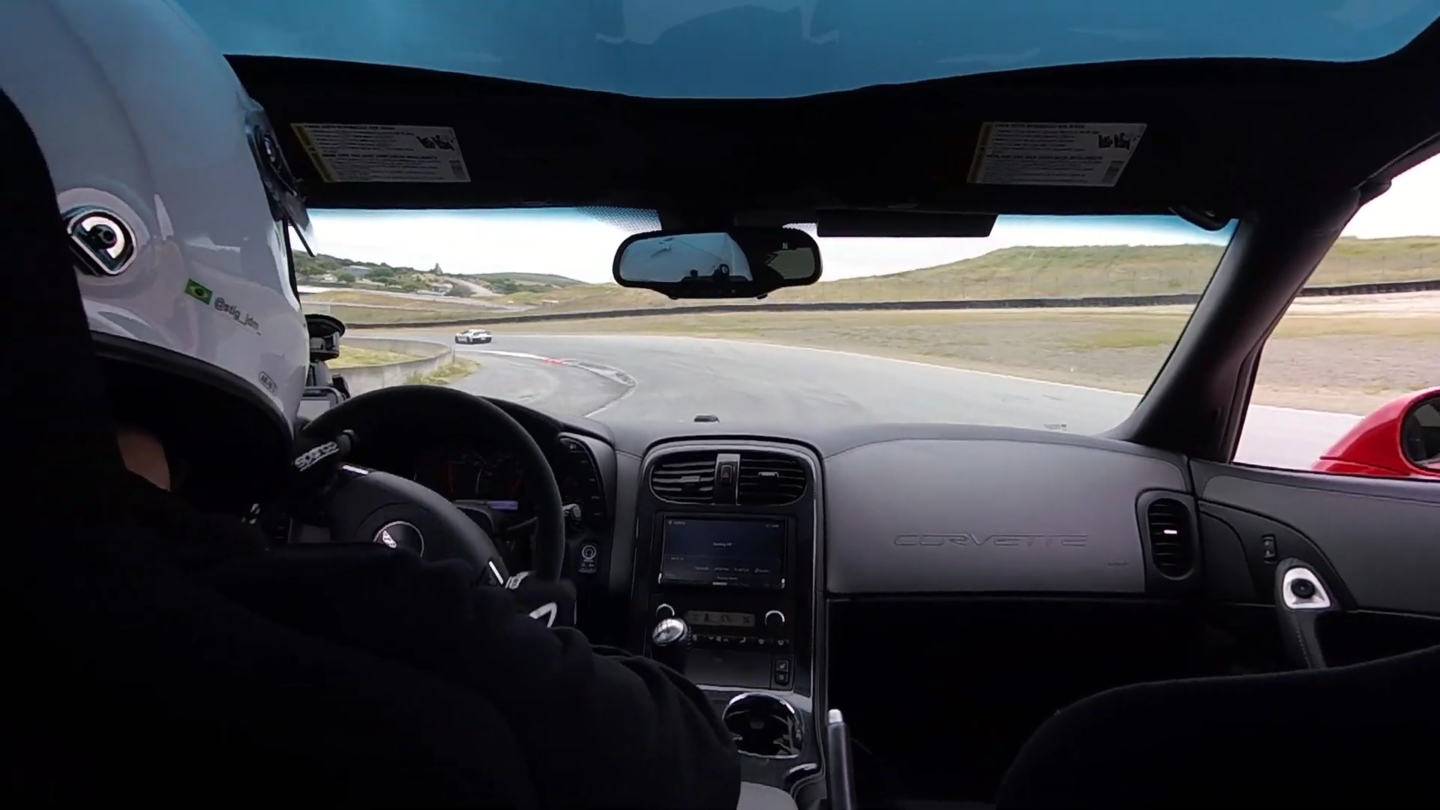
The big slides into Turns 9 and 10 (1:35) may suggest a spiky character, but let’s not discount the driver’s aggressive approach.
As much fun as this setup was, Kronemberger eventually moved away from California’s relatively tight tracks to Texas, where he started frequenting Circuit Of The Americas (COTA) and other faster tracks. There, to match the sorted and quicker-off-the-corner Porsches and McLarens he so often ran into, he realized the need for more horsepower. So, while pulling the engine to fix the rear main seal, Steven seized the opportunity to fit a hot cam and a set of headers.
Phase Two
Lots of torque and reliability may go a long way. Still, when competing against cars with greater traction and better gearboxes, one needs to take advantage of the LS motor’s receptiveness to upgrades, low modification costs, and comprehensive aftermarket. To get this motor on par with those powering the supercars that occasionally eluded him, all Kronemberger needed was a Texas Speed Cam (299/244), a set of ARH long tube headers, some porting of the factory heads, and an E85 tune by Peitz Performance. When done, the LS3 made 485 horsepower at the wheels on a Mustang Dyno and 525 horsepower on a Dynojet.
Where the standard LS3 fell flat after about 5,000 rpm, this modestly tuned version kept pulling to redline with even more urgency than an LS7. Not that he ever doubted his fondness for the mid-tier model, but these results assured him the Grand Sport was the right choice.
Sensibly, Kronemberger felt the newfound performance warranted higher safety standards. The first step towards making this Corvette a truly dedicated track car involved an Apex Works half cage; then came an OMP halo-style HTC-R seat in place of the Recaro, which once supported him. Finally, he topped off these interior additions with a blank carbon dash plate and an OMP wheel.
The ears on his fixed-back seat and the scaffolding behind it rendered the car near-unusable on public roads, so Kronemberger decided to deregister this vehicle and make it his dedicated track toy. He lowered the weight to 3,050 pounds by removing the air conditioning, carpeting, and sound system. This was a bold move considering the Texas heat, but Kronemberger is a Brazilian and can deal with it. Cool suits aren’t a necessity if you’re from São Paulo.
A Sharper Chassis and Stability at Speed
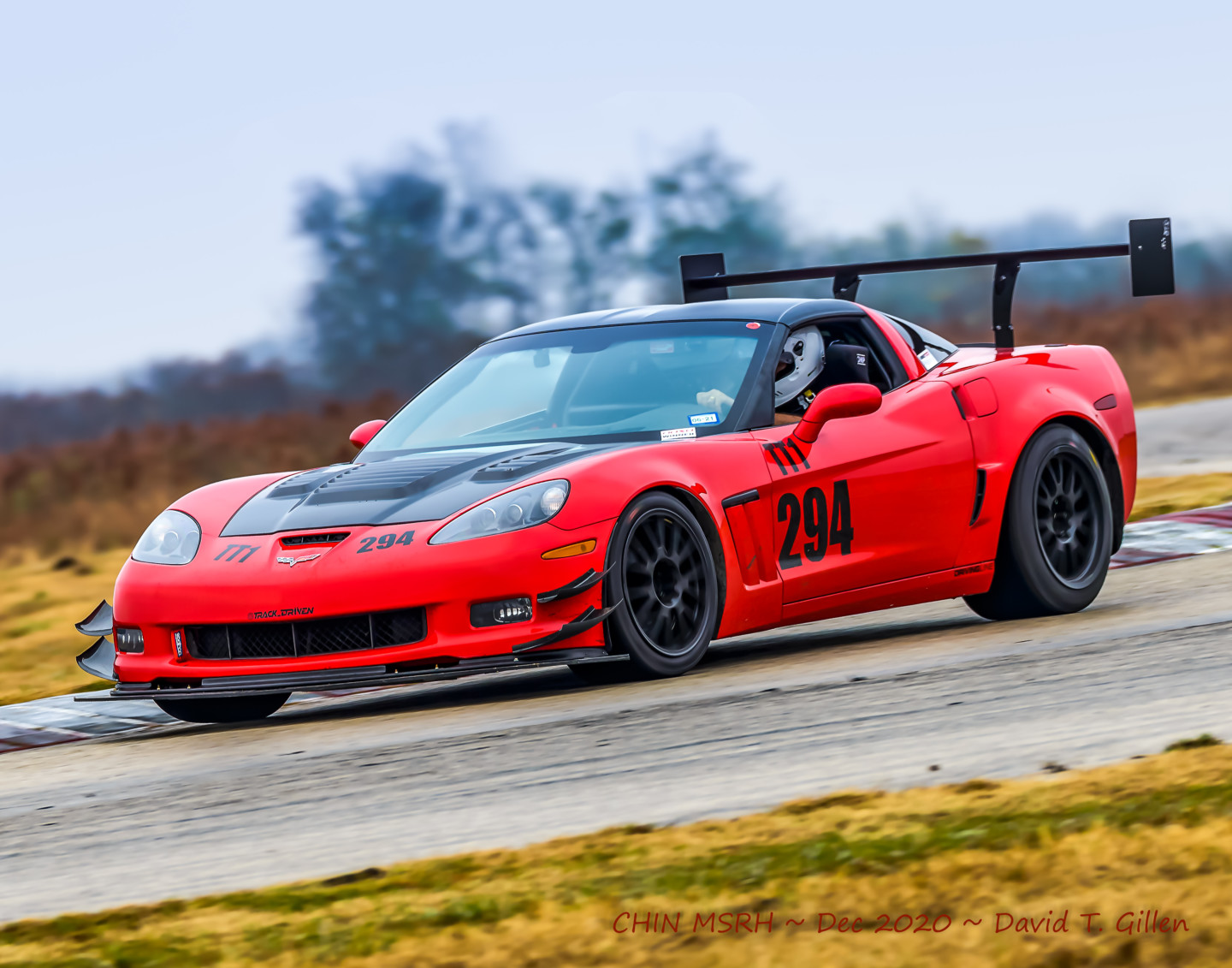
The aero pieces adorning the front give the Corvette the impression of an aggressively styled goatee.
Traction and stability at speed required a little aero and some improvements to the footwork. Steven began with a Nine Lives wing flanked by massive endplates. For a nice aero balance, he fitted the front with a GSpeed splitter and AJ Hartman canards.
Crucially, the car needed some mechanical grip improvements if it was to make good use of the newfound power. The first step involved 18-inch CCW wheels wrapped in 315 and 335-section tires. Making better use of their footprint, and an AMT camber kit, mitigated some of the understeer, limiting it in longer corners. A wider footprint would only be better exploited if it made contact with the asphalt more of the time, so he decided to replace the shocks, as well.
The LG Motorsports coilovers helped him get acquainted with and trust the car, but they only offered height adjustment, and their dampening levels were set from the factory. For more adjustment, Kronemberger installed a set of MCS two-way coilovers with remote reservoirs, improved stability and support with GSpeed spherical bearings, solid engine and transmission mounts, with AFE PFADT sway bars.
To address the growing concerns over the effectiveness of the stock brakes in a lighter, more powerful car, he opted for a set of StopTech Trophy big brakes—some of the best for this sort of build. Now, the front axle is slowed by 380mm rotors and six-piston calipers, while the rear uses enormous 355mm rotors clamped by four-piston calipers.
Prioritizing Power-Down
With a more predictable chassis underneath him, Kronemberger could push past the limits of adhesion more comfortably than he could with the stock power output. Though this tail-out style works for him in most circumstances, he found that this abundance of power forced him to rethink some of his driving approach if he wanted to get everything from the car. More specifically, he would have to prioritize different phases of the corner and see rear traction as a major determinant of his lap time.
“With the momentum cars I started with, you need to carry lots of speed into the corners and any mistake can compromise your whole lap. With the Corvette, you don’t need to worry so much about entry speed or being super smooth, but instead focus on getting back on the throttle as early as possible and using all the available power,” he elaborates.
What does this mean in terms of lines and manipulation of the inputs? With this kind of muscle car, the lap time is found by rotating the car at the right point to have it straight come corner exit—a bit earlier than with a less torque-limited vehicle. This way, one can administer the power with maximum propulsion free from any inefficient wheelspin. Fortunately, the broad powerband makes it easier to access this power at the right time, but the sheer grunt available requires a delicate right foot and a progressive application.
The power available is monstrous, even in third and fourth gear, and the way he rolls on the throttle gradually through the long Turn 14 (4:03) and then short-shifts in the middle of 16 is evidence of this.
This approach is easily seen in the footage from Circuit of the Americas above. Steven is clearly early on-throttle in corners that precede long straights to ensure he has a good run leaving the corner. Even if it means losing a little mid-corner speed, this approach yields a higher terminal speed on the following straight and, with the power available, that often makes the greatest difference over the course of a lap. Though he’s had to put on a set of Pirelli DH slicks to run with these cars, it’s no less impressive that a front-engined torque monster can match paddle-shifted GT3s at corner exits.
Over the last few years, Kronemberger’s been able to repeatedly match and beat exotics with what is essentially a mid-shelf GM product. What does the future hold for this modified underdog? Well, it currently has the NASA TT1 record at Eagles Canyon Raceway, where it outperformed higher class competitors, including a TTU-spec McLaren 720S. In fact, it was the fastest thing there that day.
It’s not hard to predict this sorted, reliable, and very lively Corvette will continue showing its trademark tail lights to a club of top-shelf cars that never offered it membership—not that it necessarily wanted it. Even if it doesn’t, you can rest assured knowing its driver, countersteering more than most would in such a powerful car, will probably be having the most fun of anyone out there.




